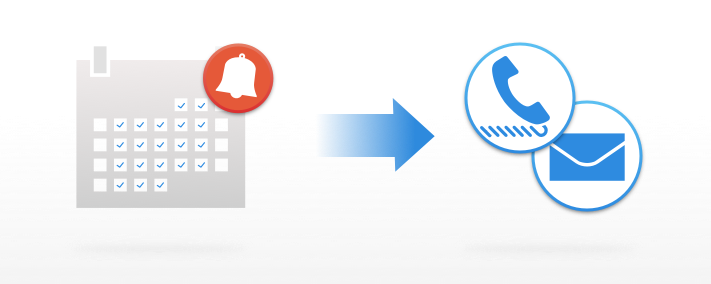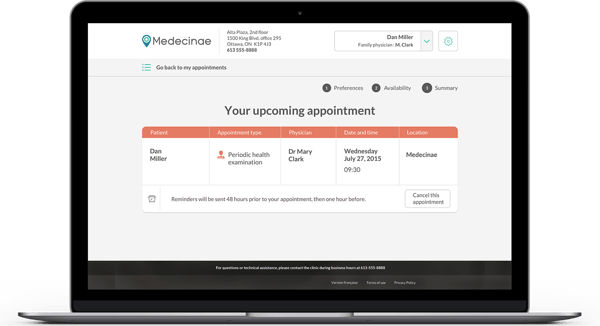
Is your clinic plagued by a high no-show rate? Are you confused as to whom is to be held accountable? In reality, factors such as lack of resources on both the patient and clinic’s end, appointment wait-time, and countless others all lead to patients foregoing scheduled appointments.
No-show rates, which may seem like an inevitable statistic, can actually be reduced. This can be done by making small procedural changes or more significantly through measures such as implementing new scheduling management tools.
Clinics armed with specific tools that aid their staff’s workflow positively influence their patient’s attendance rates. Without proper support, some patients recurrently miss their appointments. The temptation of overbooking can be high when staff is faced with patients who are regular no-shows as they directly affect clinical management and revenue. However, the overbooking method has more negative consequences than positive ones for a clinic and its patients.
What Can be Done to Diminish No-Shows?
Here are 8 things a clinic can do to help increase patient attendance rates:
1. Set automated reminders
Clinics can implement systems that automatically send patients confirmations and reminders of their appointments. When having the option of receiving reminders by phone, email or other, this puts more responsibility on the patient's shoulders and ensures maximum chances of attendance. This also eliminates the need for staff to personally call patients, if need be, and allow them to focus on more important tasks. In fact, Kaiser Permanente implemented automated reminders and increased their patient attendance rates by 1,837 appointments.

2. Develop a short-notice call list
More often than not, clinics know or are advised by their patients of whom can come in on short notice. Compiling such a list can be beneficial for clinics as it eliminates the need to double book patients and allows them to have a backup if certain appointment slots are not filled or missed. Receiving a notice for an appointment faster than expected is also a plus for patients and increases satisfaction.
3. Analyze no-show statistics
Keeping track, whether in patient files or other systems, of which patients regularly miss their appointments or arrive significantly late can help the booking workflow. In doing so, staff have access to which types of appointments are most missed and if this is influenced by the time and day of the week or vice versa. They can then properly schedule these types of appointments closer to their requested time, or further, depending on the analytical results. As an article by the Practitioner’s Journey points out, tracking results is important for properly identifying patterns.
4. Address the issue of wait-times
Although the majority of patients expect some wait-time, anything exceeding 15-20 minutes seems to set people off. However, when clinics overbook, wait-times can reach up to and sometimes exceed 2 hours. If clinics regularly use this method, patients quickly learn how things work and naturally show up later to their scheduled appointment, further contributing to wait-time issues. An article published on the Annals of Family Medicine highlights the direct impact of lengthy wait-times on no-shows as they lead to “less reliable appointment keeping.” If your clinic must use the overbooking method to offset costly repercussions, it is best to do so in the morning to be able to catch up during the day.
5. Develop a no-show policy
Diminishing the number of no-shows can be as simple as charging patients a small fee for lack of attendance to an appointment. If they really can’t make it, they will more likely advise you of this if a charge is involved. It is better to encourage patients to cancel their appointments without repercussions rather than have them simply not show up. What’s more, providing patients with an easy and quick way to cancel their appointments, whether by phone, email or other increases the chances they will do so. This allows staff to take advantage of their short-notice call lists and fill cancelled appointments proactively. The same cannot be said for no-shows.
6. Call patients to reschedule immediately
When patients don’t show up for their appointments, it is important to call and reschedule right away. This is not only to follow-up with them, but also to ensure their health is being taken care of properly. Was it an oversight on their end? Did they suddenly not have the resources or capacity to make their way to your clinic? It is important to understand the reasons behind their lack of attendance so personnel have the adequate knowledge of how to proceed.
7. Consider adopting scheduling management software
Schedule management and patient booking tools provide clinical staff and patients with a more optimal way to not only book appointments quickly and easily, but to cancel them as well. They allow clinics to automate schedules and bookings, considering a number of factors such as available workload and patient capacity per hour and physician. This ensures optimal patient attendance without contributing to wait-times. Web solutions work well as there is practically nothing to install and updates are made automatically. Customizable solutions (designed and programmed based on your reality and needs) are also a better option and are often in the same price range as standard, fixed solutions.

8. Research how Advanced Access can personally help your clinic
Advanced Access, or open access, aims to help clinics meet patient demands and ease access by allowing appointments to be available within a short time frame rather than a month later. This greatly diminishes the occurrence of no-shows and the probability of patients forgetting or foregoing their scheduled appointments, as they are provided to them at the opportune moment.
Finally, it is important to note that some sources suggest letting habitual no-show patients “go” as they can negatively impact a clinic’s functioning and profits. However, this can be life threatening to some in remote regions and to patients with chronic conditions who require close monitoring. If need be, as presented by the American Academy of Family Physicians, clinics can send their habitual no-shows letters, phone calls or emails advising them of their probationary period. This is to explain that if their lack of attendance to further appointments continues, negative repercussions may ensue.
By implementing ways to diminish no-shows, clinics move towards proactive practices rather than reactive ones. Online patient booking software also contributes greatly to this and ultimately benefits administrative staff, patients and physicians.
